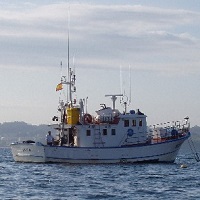Creation year
2018
220 record(s)
Type of resources
Categories
Available actions
Topics
INSPIRE themes
Keywords
Contact for the resource
Provided by
Years
Formats
Status
-
<p>The annual MOOSE-GE campaigns, initiated in 2010, are part of the network long-term observation of the Mediterranean, MOOSE, SOERE Allenvi and SNO labelled network by the INSU. The objective of this observation network is to monitor the long-term evolution of the North-Western Mediterranean in the context of climate change and anthropogenic pressure, in order to be able to detect and identify the trend of environmental anomalies of this marine ecosystem. MOOSE aims to maintain an integrated observation network and multidisciplinary in the Mediterranean Sea in accordance with the objectives of the MISTRALS programmes (HyMeX, MERMeX and ChArMEx).</p> <p style="text-align:center"><img alt="" src=" https://campagnes.flotteoceanographique.fr/campagnes/18000442/images/444.jpg" style="width: 500px; height: 294px;"></p>
-
<p>The WESTMEDFLUX-2 oceanographic cruise is part of the project that studies the presence of thermal anomalies in the ocean-continent transitions of the Western Mediterranean. The proposed cruise follows WESTMEDFLUX that took place in 2016 and that resulted in mapping regional trends of thermicity in in the Gulf of Lion, offshore Baleares and Sardinia. It also pointed out to the existence of several local heat flow anomalies in particular on the South Balearic slope and deep basin. In the deep oceanic basin, strong anomalies seem to be merely associated to salt diapiric structures, but on the rifted continent and transition zone, other heat sink and sources are suggested (e.g., bottom water currents, slope instabilities and focused fluid migrations). In order to better understand the source of these anomalies and the link with the crustal nature and structuring of the margin, we propose on the South-Balearic margin additional close-spaced heat flow measurement, sediment coring and dredging sites. Sediment cores will be used for turbidite and contourite studies and for geochemical analysis of pore fluids. The dredging operations aim an estimation of age and nature of volcanic rock material from sea mounts.</p>
-
<p style="margin-left:0cm; margin-right:0cm">The objective of the campaign PELMED is to estimate the biomasses of small pelagic fish of the Gulf of Lion by acoustic method and to collect a maximum of parameters at each level of the trophic chain. This approach aims towards a more and more ecosystematic campaign(countryside), what is in adequacy with the Directive Centre Strategy for the Marine environment (DCSMM) and the objectives of the UMR MARBEC.</p>
-

Weekly cruise to monitorize physical and chemical variables in Rías Altas (Galicia)
-
Weekly cruise to monitorize physical and chemical variables in Rias Baixas (Galicia)
-

Weekly cruise to monitorize physical and chemical variables in Rías Altas (Galicia)
-

Weekly cruise to monitorize physical and chemical variables in Rías Altas (Galicia)
-

Weekly cruise to monitorize physical and chemical variables in Rías Altas (Galicia)
-

Weekly cruise to monitorize physical and chemical variables in Rías Altas (Galicia)
-
Weekly cruise to monitorize physical and chemical variables in Rias Baixas (Galicia)
 Catálogo de datos del IEO
Catálogo de datos del IEO